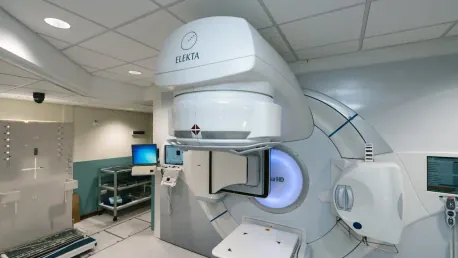The article, “How Do I: Transform Healthcare?” by Amanda Norris, addresses the challenging yet essential topic of comprehensively transforming healthcare delivery systems. Especially in light of pressing issues like workforce shortages, escalating costs, and subpar outcomes, the discussion shifts towards effective and genuine changes that healthcare executives can implement for substantive improvements.
Embracing New Technologies
A persistent theme throughout the article is the adoption of new technologies such as Artificial Intelligence (AI) and virtual care in healthcare systems. These technologies are highlighted as potential catalysts for significant progress when utilized effectively. Arthur Gianelli, the CIO at Mount Sinai Health System, advocates for fostering a culture that embraces experimentation and learning from failure. He emphasizes the importance of encouraging teams to try new technologies, learn from their mistakes, and relentlessly pursue better solutions.
Critical Viewpoints and Radical Changes
Equally compelling is the viewpoint of Sachin Jain, President and CEO of the SCAN Group and Health Plan. Jain is critical of the current efforts in the healthcare sector, arguing that true transformation has not yet occurred. He underscores the inefficacy of many existing programs and stresses the need for radical changes, even if they involve short-term financial and job losses. Jain urges leaders to cut underperforming programs and rigorously reassess the value provided by current care models, emphasizing the necessity of asking tough questions about their genuine impact.
AI: The Modern Printing Press of Healthcare
An intriguing analogy in the article compares AI’s potential to transform healthcare to the way the printing press revolutionized information dissemination. Jain insists that making difficult decisions about cutting non-performing programs and reassessing workforce roles within healthcare organizations can lead to significant improvements in patient outcomes. This comparison underscores the revolutionary potential AI holds for the healthcare sector.
Shifting Priorities Toward Health Outcomes
The article ultimately identifies a consensus among experts on the need to move away from traditional practices that prioritize financial gains. Instead, the focus should be on truly improving people’s health. Leveraging AI to shift operational paradigms and reevaluating workforce needs are critical steps toward this transformation. The viewpoints presented highlight the urgency for decisive and innovative actions to genuinely transform healthcare delivery.
Call to Action for Healthcare Leaders
The article, “How Do I: Transform Healthcare?” by Amanda Norris, delves deeply into the demanding yet crucial endeavor of overhauling healthcare delivery systems on a comprehensive level. With pressing challenges such as workforce shortages, soaring costs, and unsatisfactory patient outcomes, the conversation pivots towards identifying and implementing effective, authentic changes that healthcare leaders can initiate to achieve significant improvements.Norris emphasizes the need for healthcare executives to adopt innovative strategies that not only address immediate issues but also pave the way for sustainable, long-term advancements. This includes integrating technology, improving care coordination, and promoting value-based care models that prioritize patient well-being over sheer volume of services. The article argues that while the path to transformation is fraught with obstacles, a focused approach on genuine problem-solving and strategic planning can lead to a more efficient, affordable, and high-quality healthcare system.Engaging with stakeholders, fostering a culture of continuous improvement, and emphasizing patient-centered care are highlighted as critical elements in this transformative journey.









